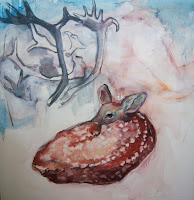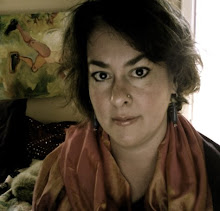skip to main |
skip to sidebar
 My father has taught me to be an avid bird-watcher. These small-scale paintings combine birds and human faces or places them inside the structure of pelvic bones.
My father has taught me to be an avid bird-watcher. These small-scale paintings combine birds and human faces or places them inside the structure of pelvic bones.
 This image makes me think of an orphaned child, with the bones of her parents obscuring the view of the reclining female figure behind.
This image makes me think of an orphaned child, with the bones of her parents obscuring the view of the reclining female figure behind.
